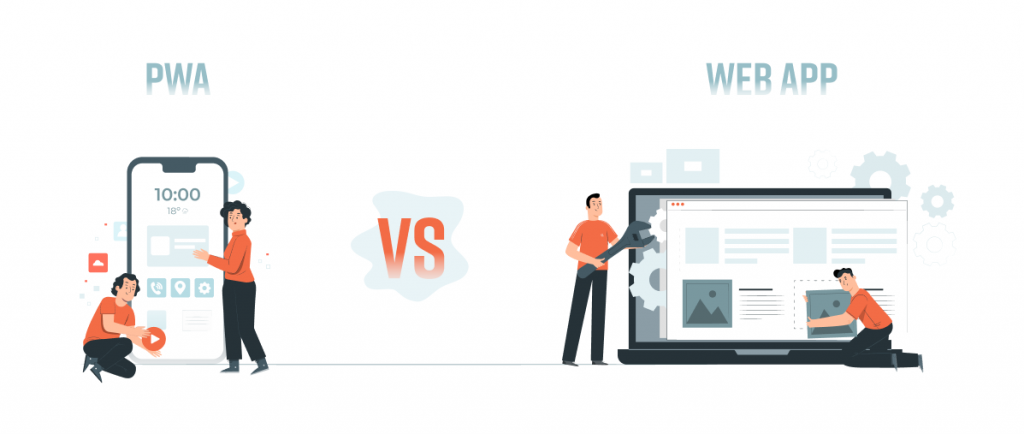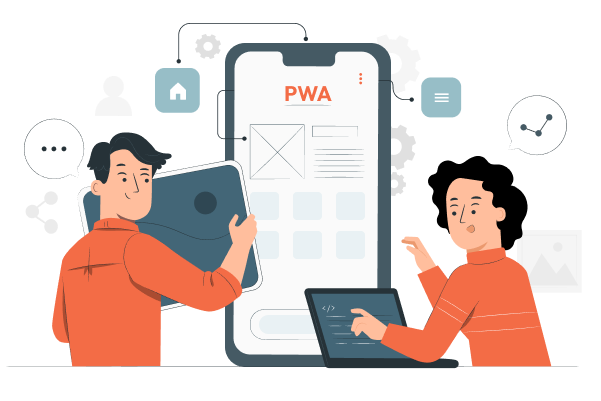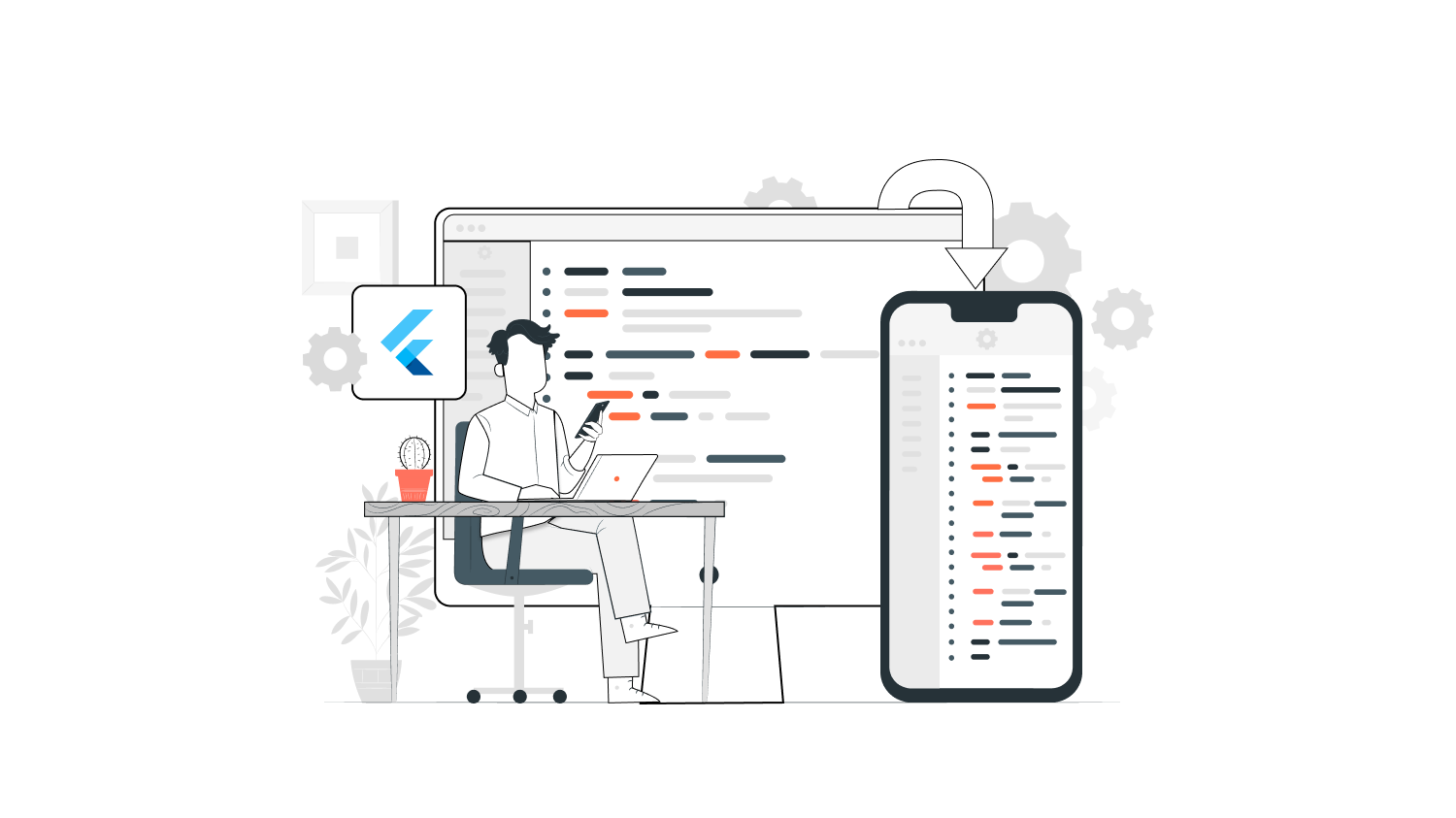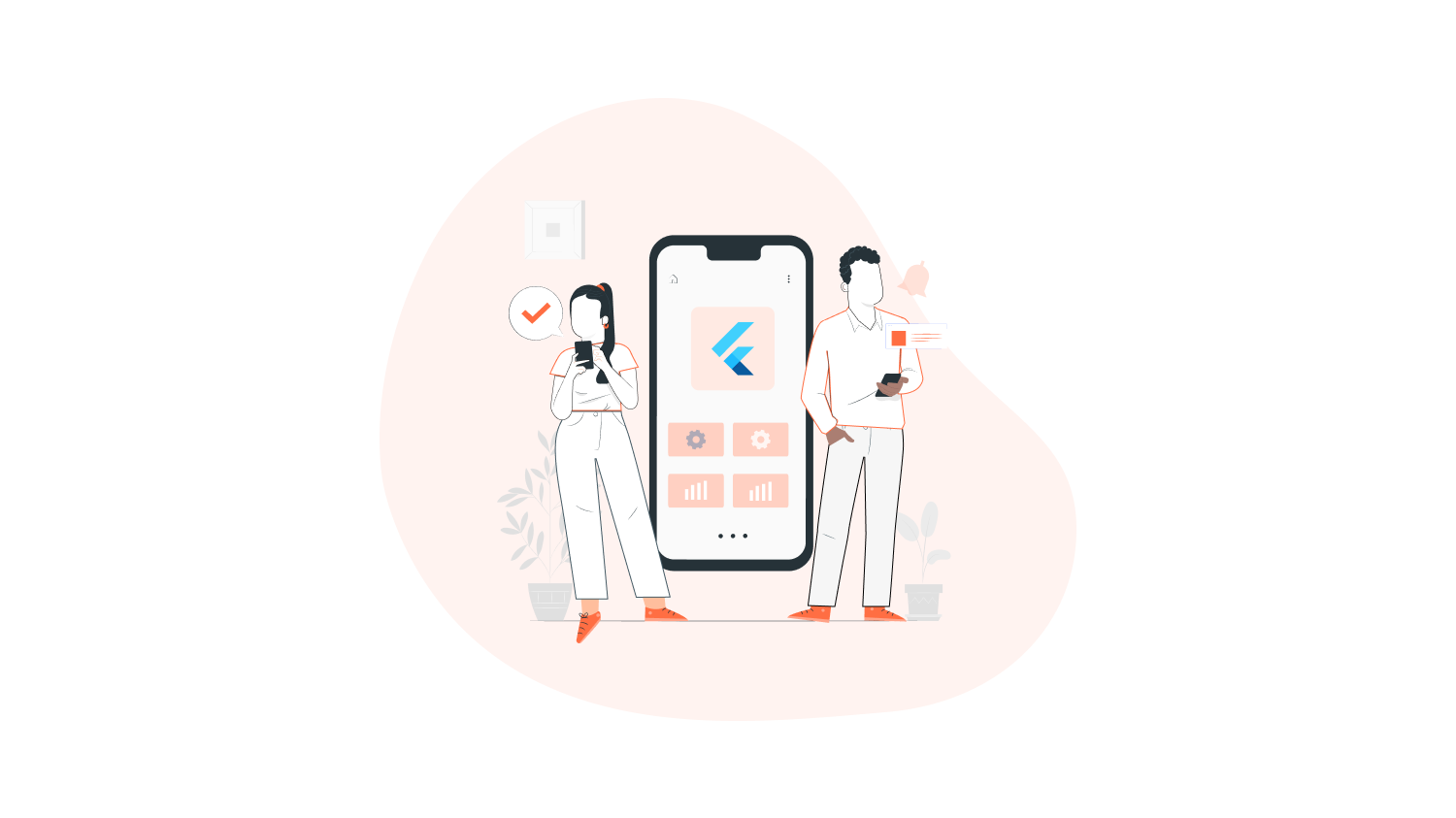Businesses are shifting their focus from websites to apps because apps provide more content and engage users better.
Progressive Web Apps have a great future because they combine the best of web and mobile applications. PWAs try to integrate mobile device functionality with accessibility, discoverability, and user-friendliness.
Let’s get to know PWAs in detail.
What is the difference between PWAs and Web apps?

Progressive web apps (PWA) are websites that appear and function like mobile apps.
PWAs are designed to take advantage of native mobile device features without requiring the end user to visit an app store, purchase software, and download it locally.
Latest browser developments allow users to install web apps on their home screen, receive push notifications, and even access offline.
Let us now understand a web app:
Web apps are application software that runs in a web browser, unlike software programs that run locally and natively on the device’s operating system (OS).
Web applications are delivered to users with an active network connection via the World Wide Web.
PWAs Vs. Web apps
| PWAs | Web Apps |
| Runs on web technologies- HTML, CSS, and JavaScript. | It is designed to function in a web browser and cannot be installed on a device. |
| It can function offline. | It needs strong internet connectivity. |
| Uses the majority of native device features and provides users with a native-like experience. | App store approval is not required, so web apps can be launched easily. |
| It can be shared and installed using a link. | They have comparatively low security. |
| Takes less time to load. | They take a long time to load. |
Benefits of PWAs
- Progressive
Progressive web apps are compatible with any device and operating system. These apps improve gradually by utilizing the features available on the user’s device and browser.
The method of gradual improvement is the fundamental principle of how a PWA operates.
- Quick page loading
PWA users benefit from faster page loading times than traditional websites.
Quick loading is fueled by functions such as service worker caching, request processing, and others that improve user experience and conversion rates.
- Responsive
The UI of PWA is adaptable to any form factor and screen size of the device the user is accessing.
A progressive web app has a near-native look and feels and delivers a consistent experience on any device.
- Connectivity independent
Progressive Web Apps are intended to function even when not connected to the internet. This improves the user experience even when there is no internet connection.
- Easily installable
A PWA allows users to install the app with a click away. This smooth installation allows users to enjoy services with ease.
- Secure
As progressive web apps provide a more intimate user experience, it is hosted over HTTPS to prevent network attacks and data interception.
- Discoverable
PWAs can be found using World Wide Website Consortium Manifests and service worker scope registration. It is a significant advantage over native apps because PWAs are discoverable.
- Re-engageable
Push notifications keep users up to date. It reminds users and allows them to interact with the app, encouraging them to use it actively.
- Reliable despite Network flaws
Despite technological advancements, the majority of the world still uses a 2G internet connection.
Progressive Web Apps can perform offline, but they can be used even if the connectivity is poor. This is supported by a type of web worker-service worker. A PWA loads data from the cache instantly and runs smoothly on both 2G and 3G networks.
Why should you utilize PWA?
Here are some reasons people prefer PWAs over web apps for development.
- Quick market reach- PWAs are the best option when you need to get to market quickly and cover all of the major platforms with a single codebase.
- Less development cost– Progressive Web Apps can be created in less time and at a lower cost.
- User engagement– You can increase user engagement by developing an appealing UX/UI design.
- Lightweight experience– You can create a Progressive Web App that is smaller in size, offering your users a more lightweight experience.

What attributes contribute to PWAs having a great future?
When we advance with new technologies, we evolve with new user-friendly solutions. Here are a few key reasons why PWAs are beneficial in the future.
Easy to implement
If you already have a web app, there is no need to change your framework, use new technologies, or hire new people.
All that is required is a front-end coding resource, such as JavaScript, and the developer you already have on board.
Users are not required to install a PWA from the Google Play or Apple App Store. When you first use a PWA, you will be able to pin it to your home screen.
This implies you can skip the Play Store/App Store review process, allowing your app to go live faster.
Expandable
Progressive Web Apps are simple to extend. You can add new features to your Progressive Web App as more web browsers become functional with everything PWAs have to introduce.
Cross-platform
Progressive web applications (PWAs) could be an effective solution if you want to develop an app for multiple platforms without spending a huge amount.
If you want to create a media platform free of censorship, exorbitant service fees and commissions, and excessive advertising, a progressive web app is the right approach.
Read More : How to Create a Progressive Web App with React
Backed by Google
Progressive Web Apps appear to have a promising future as it is backed by Google.
In some cases, Google envisions that app-like websites will become nearly indistinguishable from native apps.
PWAs that are trending in 2022
- Starbucks
Customers can use the app to look at menus with nutrition details and accurately customize their food and drink orders without needing to connect to the internet.
According to Statista, Starbucks’ net revenue reached 24.61 billion U.S. dollars in 2021, reflecting an increase over the previous year’s total of 19.61.
- MakeMyTrip
As mobile is becoming the most popular booking source among customers, developers created a PWA that resulted in a fast, dependable, and polished mobile web experience.
MakeMyTrip reported that gross bookings in the fourth quarter of 2022 increased to 1,012.3 million dollars from 759.2 million dollars in the previous fiscal period. Its gross bookings were 3,188.9 million dollars in fiscal year 2022, up from 1,635.4 million dollars in fiscal year 2021.
- Uber
Uber kickstarted the evolution of the taxi market in the early 2010s since it began in 2009. Uber generated 17.4 billion dollars revenue in 2021, a 56% increase year-on-year.
Uber has enabled everything as light as possible in its PWA, avoiding unnecessary components to perform robustly even under 2G networks.
Pinterest allows you to “Repin” an image and add it directly to the pinboard of your choice. One interesting fact is that female Pinterest users are comparatively higher than male users.
As of the second quarter of 2022, Pinterest had 433 million monthly active users (MAUs) worldwide, down by 21 million users when compared to the second quarter of 2021.
Pinterest experienced the highest number of MAUs at the end of March 2021, when the image-based social media platform had 478 million MAUs worldwide.
- Spotify
In addition to the Android and iOS platforms, the company has applications available for Apple macOS computers and Microsoft Windows.
Spotify has introduced the ‘Spotify Connect functionality, which allows you to listen to music from a wider range of entertainment systems.
Spotify currently has 433 million users, including 188 million premium subscribers spread across 183 regions. Over 44% of users access Spotify every day.
Spotify expects the platform to have 450 million monthly active users by the end of the third quarter of 2022.
- Telegram
The PWA version of Telegram enables you to access your accounts on mobile and desktop simultaneously.
Telegram has 500 million monthly active users. Telegram reached more than one billion times, with 430 million downloads in 2021 alone.
- Trivago
Trivago is an online travel booking site that specializes in hotel and lodging meta-searches. The company’s revenue in 2021 was approximately 361.5 million US dollars, up from around 249 million US dollars in 2020 but only accounted for 43 percent of the figure reported in 2019.
It had nearly 4.3 million unique global visitors in May 2022, up from 1.8 million visitors in December 2021.
How can NeoITO help businesses with PWA development?
NeoITO’s professionals are creating huge, scalable projects using technological advancements and launching successful solutions on the market. Connect with us if you are looking to convert your website to a top-moving, customer-centric, Progressive Web App.
FAQs
Will web apps replace native apps in 2023?
While it’s unlikely that web apps will completely replace native apps in 2023, they will certainly become more prevalent and offer similar functionality and user experience.
What are some of the emerging technologies that will impact web apps in 2023?
Technologies such as 5G, AI, and AR/VR are expected to have a significant impact on web apps in 2023, making them faster, more intelligent, and more immersive.
How can businesses prepare for the future of PWA and web apps?
Businesses can prepare for the future of PWA and web apps by ensuring that their websites are optimized for performance, implementing a PWA strategy, and keeping up with the latest trends and technologies in the industry.
What are the benefits of using PWA and web apps ?
PWA and web apps offer many benefits, including improved user experience, better performance, increased engagement, and lower development costs. They are also more accessible as they don’t require users to download and install them on their devices.




